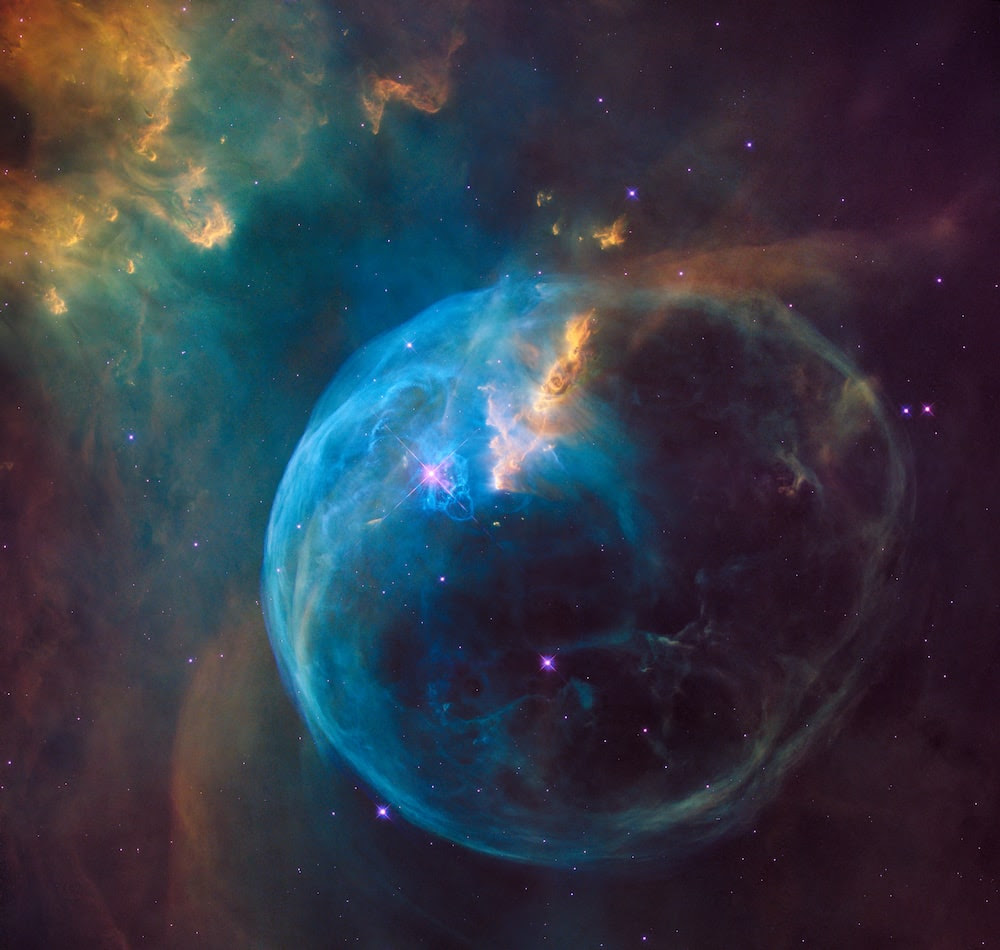The Earth’s solar system is located within the Milky Way galaxy, which itself is made up of several arms, including the Orion arm which houses our solar system. By deepening his knowledge of the Earth, the Sun and the planets that orbit around it, the human being has been led to wonder about the existence of other solar systems functioning in a similar way to ours.
Scientists have tried to find out if other planets orbit the sun, if these planets, called exoplanets because they are outside our solar system, could have the same characteristics as the planets of our solar system and if some of them could have developed life in a similar way to the Earth.
This question of the plurality of worlds is a subject that has existed since antiquity, but it is from the XVIᵉ century and Copernicus, who demonstrates that the Earth revolves around the Sun and not vice versa, that scientists and philosophers, such as the Italian Giordano Bruno, develop the idea of other worlds revolving around other suns.
From the XVIIᵉ century, with the theories of Johannes Kepler, on the movement of the planets, and Isaac Newton on gravity, the existence of other solar systems is no longer in doubt, even if it has not yet been possible to observe them. The distance and the relatively small size of the planets in relation to their sun make their observation very difficult in the absence of astronomical equipment of great precision, it is necessary to wait until the 1990’s to observe the first exoplanet from the observatory of Haute-Provence in France.
The presence of a planet around a star could be observed thanks to the use of the method of radial velocities which makes it possible to detect the presence of a planet by observing the variations of the speed of a star, variations caused by the movement of the smaller planet around the star.
This first exoplanet, named 51 Pegasi b, was the subject of a presentation in the journal Nature in November 1995 and resulted, for its discoverers, in the Nobel Prize in Physics in 2019. Thanks to observations, theoretical models and their comparison, it is now certain that planets of great diversity populate our galaxy in large numbers and that some revolve around a star.
Some planets, similar to Jupiter for example, revolve around their star in a few days because they are very close to it and experience temperatures above 1,000˚C, others can be two to three times larger than Earth and be either telluric, composed of rocks and metal, or gaseous.
In most cases, several planets will orbit a star, as in the solar system, but their orbits may be much more off-center or tilted with respect to their star. The multiplication of observations allows scientists to discover more planets with properties similar to those of the Earth, such as distance from the Sun for example.
The use of new instruments also makes it possible to study the atmosphere of these planets to detect possible traces of life and thus participate in the search for answers on the place of the Earth in the Universe and its unique or ordinary character.
In 2015, NASA reported that it had discovered an exoplanet with the most Earth-like characteristics observed to date. This planet called Kepler 452b is the same distance from its star as Earth, makes the revolution around its star in 385 days compared to 365 for Earth and could strongly be rocky like Earth, have an identical atmosphere and large amounts of water.
But unlike the Earth’s Sun, the star of Kepler 452b is 1.5 billion years older and 10% brighter. This information and the distance from its star may indicate that Kepler 452b has entered a period of strong warming in its climate, according to Doug Caldwell, an astronomer at the Search for Extraterrestrial Intelligence (SETI) Institute.
As the star ages, it releases more energy and can heat the planet, causing the evaporation of the oceans and inexorably decreasing its water reserves. Kepler 452b could foreshadow what might happen to Earth in about 1 billion years when our Sun has aged and become brighter.



Comment here